
Syrian Wars 7

Seleucids against Ptolemies
The Battle of Panion
A scenario for Ancient Battle games
by Jeff Jonas

Photo by Rene from his Kingdom Con archive:
http://www.flickr.com/photos/97177279@N00/sets/72157626522045682/
![]()
![]()
![]()
![]()
![]()
![]()
![]()
![]()
![]()
![]()
![]()
![]()
![]()
![]()
One
![]() Two
Two ![]() Three
Three ![]() Four
Four ![]() Five
Five ![]() Six
Six ![]() Seven
Seven
....King Ptolemy Vth makes an announcement-- no skimping on taxes.... |
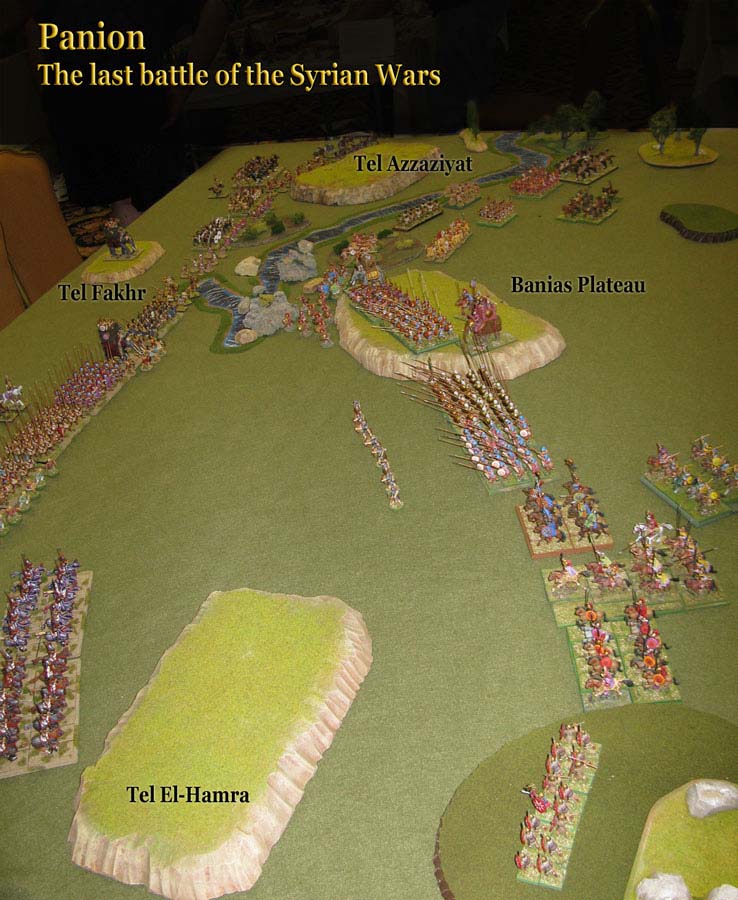 |
Panion: The Unknown Battle
|
Background
When Ptolemy IV passed in 204 he left his son then aged five as king. The regents and
court officials seemingly fell into an orgy of graft and corruption that would have shamed
even the Ptolemies, had they not built their empire based entirely on such graft and
corruption. As a result the defenses of the frontier fell into decline as a resurgent and
re-invigorated Antiochus III invaded Syria and Palestine. The Ptolemies were forced to
turn mostly to foreign mercenaries to fend off this new surge, as the frontiers had been
in revolt for many years after Raphia, and the southern reaches of the Nile were at times
under control of the Egyptian rebels. It is interesting that the famous Rosetta Stone is a
document of this period, a marker establishing the rule and legitimacy of the boy king
Ptolemy V. Egypt turned to the Aetolian General Scopas to take back Palestine and Syria,
and with a massive mercenary army full of Greeks he did so sometime between 200 and 198.
After a winter break Antiochus III mustered his army and marched from Damascus down the
Sea Road- which would take him to the springs at Panion, and the headwaters of the Jordan
River. Scopas rushed to block the enemy approach with his army, but apparently Antiochus
got to Panion first and set up camp.

The Terrain
The area of the battle can be surmised from the description by Polybius, with the area
mapped in using Google. The hills generally fit the description. Apparently the
Banias stream is not an obstacle as it progressed toward the Banias plateau, but as it
reaches there it becomes unfordable, becoming deep pools with waterfalls and rocky
outcrops. The photos of the area suggest terrain very similar to hiking in Southern
California, such as out in Cuyamacha, or Mt. Palomar.
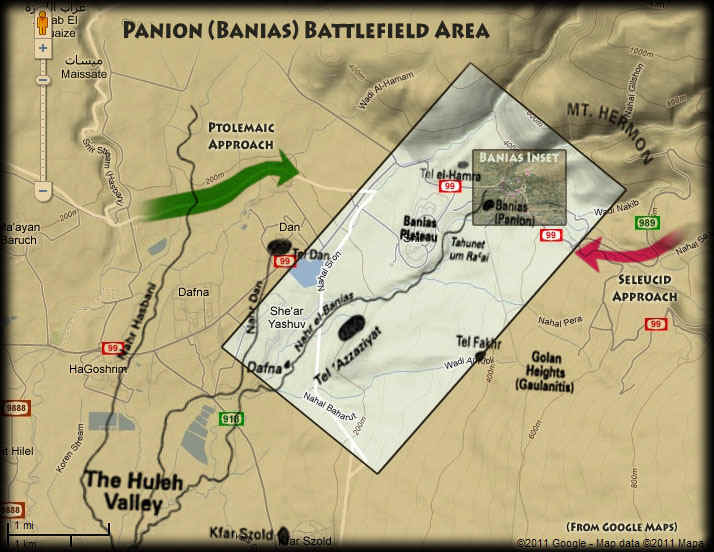
The Battle
Our game was set up by Paul Rigby at the new(ish) Kingdom Con gaming convention in San
Diego. We decided to do a demo game using Warhammer Ancient Battles version 2 as our
rules. We had hoped to get three players per side so we could coach them, but we ended up
with three only, so it was three on two with Paul and I playing as well. Paul lined up
with Pat Lowinger, and Mike Russell on his side. I had an enthusiastic partner in
John Palomino. John and Mike were novices to WAB, although John was well versed in
older ancient rules sets. Pat is a WAB grognard, so he knew what he was doing.
Because this was a demo game we set up our troops based on my deployment map below.
I felt it was better to get to the action as soon as possible.
The game did not follow history completely. In the real battle, we are told
that the Seleucid cataphracts bowled over their opposition then turned on the Ptolemaic
center- which had been pushing back the Seleucids until their elephant reserves and
Tarentine cavalry held them in check. It appears that the Ptolemaic right wing held
its own or even was victorious. The Ptolemaic general Scopas was defeated entirely,
and he fled with ten thousand survivors.
In our game things went a bit differently. On the Seleucid right the cataphracts were not as successful. One unit was wiped out early in the game. As the centers locked horns, things became confused around the broken ground. On the Seleucid left, they were eventually totally routed. As the game ended both sides were still locked in combat, but the Seleucid guard cavalry were about to flank the last reserve of the Ptolemaic army. On the right wing the Ptolemaic forces under John completely routed the Seleucid left wing troops. So the game was decided as a minor Ptolemaic victory. After the fact I decided that the Seleucid guard cavalry should be able to deploy more forward, or to the left flank, this allows them to get into action faster and can make it tougher on the Ptolemaic army.
Both sides deployed 4200 points of troops, so we had large forces on our eight foot by five foot table. I laid out the terrain as best I could, since I did not have time to build a table. Luckily I had enough bits to make the terrain interesting.
Thanks to Paul Rigby for getting this going. I hope the players enjoyed playing our demo and the spectators enjoyed our game!!

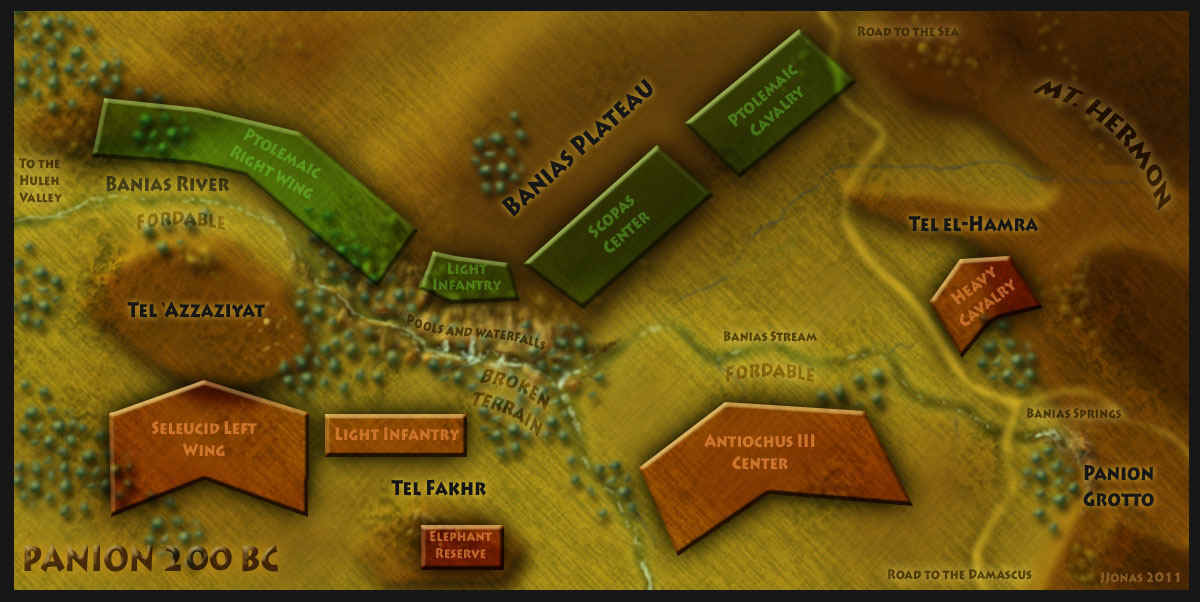
Here's the layout for the game. The Seleucids go first, their
right wing has the jump on the Ptolemaic left.
They should get a free triple move for the Seleucid Guard cavalry to either flank (we
did not do this in our game and I think it is important). Thureophoroi were open order for
this game as were thorakites.
Here is the army list for the units!
More pictures at:
http://www.flickr.com/photos/97177279@N00/sets/72157626522045682/
Photos by Rene from his Kingdom Con archive:
********************************************************************************************
http://www.perseus.tufts.edu/hopper/text?doc=Plb.+16.18&redirect=true
Polybius’ criticism of Zeno's Account of the Battle of Panium
The best illustration of what I mean will be the following. This same writer, in his
account of the siege of Gaza and Antiochus's pitched battle with Scopas in Coele-Syria, at
Mount Panium, (1) showed such extreme anxiety about ornaments of style, that he made it
quite impossible even for professional rhetoricians or mob-orators to outstrip him in
theatrical effect; while he showed such a contempt of facts, as once more amounted to
unsurpassable carelessness and inaccuracy. For, intending to describe the first position
in the field taken up by Scopas, he says that "the right extremity of his line,
together with a few cavalry, rested on the slope of the mountain; while its left with all
the cavalry belonging to this wing, was in the plains below. That Antiochus, just before
the morning watch, despatched his elder son Antiochus with a division of his army to
occupy the high ground which commanded the enemy; and that at daybreak he led the rest of
his army across the river which flowed between the two camps, and drew them up on the
plain: arranging his heavy-armed infantry in one line, facing the enemy's centre, and his
cavalry, some on the right and the rest on the left wing of the phalanx, among which were
the heavy-armed horsemen, under the sole command of the younger of the king's sons
Antiochus. That in advance of this line he stationed the elephants at certain intervals,
and the Tarentines (2) commanded by Antipater; while he filled up the spaces between the
elephants with archers and slingers. And finally, that he took up his own station on the
rear of the elephants with a squadron of household cavalry and bodyguards." After
this preliminary description he continues: "The younger Antiochus"—whom he
had described as being on the level ground with the heavy-armed cavalry—"charged
down from the high ground and put to flight and pursued the cavalry under Ptolemy, son of
Aeropus, who was in command of the Aetolians in the plain on the left wing; but the two
lines, when they met, maintained a stubborn fight." But he fails to observe that, as
the elephants, cavalry, and light-armed infantry were in front, the two lines could not
possibly meet at all.
(1) Called Panion or Paneion. See Josephus B. Jud. 3, 10, 7, The town
near it was called Paneas, and afterwards Paneas Caesarea, and later still Caesarea
Philippi. Scopas, the Aetolian, was now serving Ptolemy Epiphanes; see 13, 2; 18, 53.
(2) See on 4, 77; 13, 1.
Histories. Polybius. Evelyn S. Shuckburgh. translator. London, New York. Macmillan. 1889.
Reprint Bloomington 1962.
Robert B. Strassler provided support for entering this text.
Next he says that "the phalanx, outmatched in agility and forced backwards by the
Aetolians, retired step by step, while the elephants received the retreating line, and did
great service in charging the enemy." But how the elephants got on the rear of the
phalanx it is not easy to understand, or how, if they had got there, they could have done
good service. For as soon as the two lines were once at close quarters, the animals would
no longer have been able to distinguish friend from foe among those that came in their
way. Again, he says that "the Aetolian cavalry were thrown into a panic during the
engagement, because they were unaccustomed to the look of the elephants." But, by his
own account, the cavalry which was originally stationed on the right wing remained
unbroken; while the other division of the cavalry, that on the right wing, had all fled
before the successful attack of Antiochus. What portion of the cavalry was it, then, that
was on the centre of the phalanx, and was terrified by the elephants? And where was the
king, or what part did he take in the battle, seeing that he had with him the very flower
of the infantry and cavalry? For not a word has been told us about these. And where was
the elder of the young Antiochi, who, with a division of the troops, occupied the high
ground? For this prince is not represented even as returning to his quarters after the
battle. And very naturally so. For Zeno started by assuming two sons of the king named
Antiochus, whereas there was only one in the army on that occasion. How comes it, again,
that according to him, Scopas returned first and also last from the field? For he says:
"when he saw the younger Antiochus, after returning from the pursuit, on the rear of
his phalanx, and accordingly gave up all hopes of victory, he retired." But
afterwards he says that "he sustained the most imminent peril when his phalanx got
surrounded by the elephants and cavalry, and was the last man to retire from the
field."
These and similar blunders appear to me to reflect very great discredit upon writers. It
is necessary, therefore, to endeavour to make one's self master of all departments of
history alike. That is the ideal; but if that is impossible, one ought at least to be
excessively careful on the most essential and important points in it. I have been induced
to say this because I have observed that in history, as in other arts and sciences, there
is a tendency to neglect the true and essential, while the ostentatious and the showy
secure praise and emulation as something great and admirable. The fact being that in
history, as in other departments of literature, these latter qualities require less
trouble and gain a cheaper reputation. As to his ignorance of the topography of Laconia,
considering that his error was an important one, I did not hesitate to write to Zeno
personally.
Polybius wrote to Zeno on his geographical mistakes.
For I thought it a point of honour not to look upon the mistakes of others as personal
triumphs, as is the way with some writers; but to do the best I could to secure
correctness, not only of my own historical writings, but of those of others also, for the
benefit of the world at large. When Zeno received my letter and found that it was
impossible to make the correction, because his history was already published, he was much
vexed, but could do nothing. He, however, put the most friendly interpretation on my
proceeding; and, in regard to this point, I would beg my own readers, whether of my own or
future generations, if I am ever detected in making a deliberate misstatement, and
disregarding truth in any part of my history, to criticise me unmercifully; but if I do so
from lack of information, to make allowances: and I ask it for myself more than others,
owing to the size of my history and the extent of ground covered by its transactions. . .
.
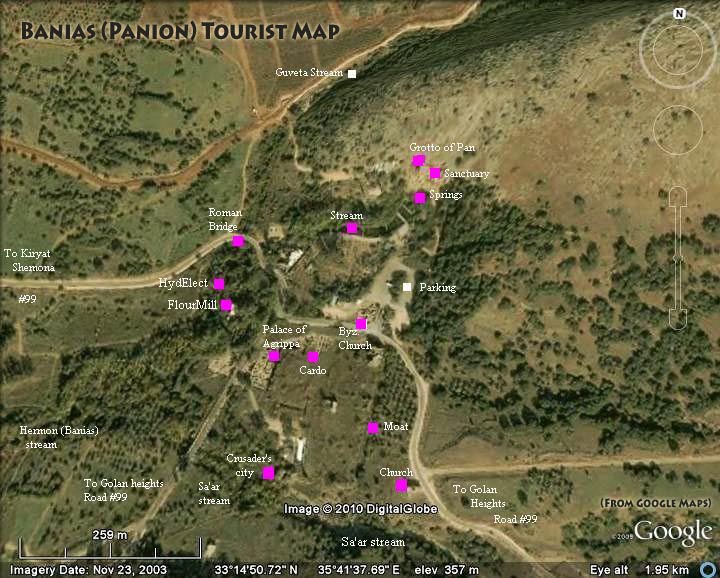
Josephus (Ant. 12 3 4): "Antiochus overcame Scopas, in a battle fought at the
fountains of Jordan, and destroyed a great part of his army".
The Roman historian Josephus Flavius wrote that the Hasmonean king captured the
Golan (Wars 1 4): "He also demolished Golan, and Seleucia, and what was called the
Valley of Antiochus". (The latter area is the valley west of Banias).
Banias temples and springs:
http://168.144.188.132/Photos55/Banias_google.jpg
map of area:
http://168.144.188.132/Photos55/Baniasmap.JPG
http://168.144.188.132/sites/BaniasTemples.html
Overlay maps from:
Caesarea Philippi: Banias, the lost city of Pan By John Francis Wilson
http://books.google.com/books?id=1pkPt0uD708C&pg=PA5&lpg=PA5&dq=caesarea+philippi+panion&source=bl&ots=n_fQhKFvEl&sig=VnMe7zBjQTSfA2CIwPLGr8OUJzE&hl=en&ei=QM3STePjGJSosQOenPymCQ&sa=X&oi=book_result&ct=result&resnum=6&ved=0CDUQ6AEwBQ#v=onepage&q=caesarea%20philippi%20panion&f=false
Other Panion resources:
http://www.warandgame.info/2010/11/battle-of-panion-200-bc.html
The Seleucid Army
Organization and Tactics in the Great Campaigns
By Bezalel Bar-Kochva
Tel-Aviv University 1976
http://ebooks.cambridge.org/chapter.jsf?bid=CBO9780511665721&cid=CBO9780511665721A026
DBA Resource:
http://www.fanaticus.org/DBA/battles/panion200bc.html
Caesarea Philippi:
http://caesarea-philippi.co.tv/
This game was large enough to get some of the old figures off the shelf and onto the
table... including some old Minifigs and Ral Partha's and RAFM figures... if you look
close you will see them in the photos!!
Miniatures:
Relic: http://www.relicminiatures.com/
Aventine Miniatures:
Polemarch: http://theminiaturespage.com/news/463272
Wargames Foundry: http://wargamesfoundry.com/
Old Glory: http://www.oldgloryminiatures.com/
SHQ (Newline Designs):
http://www.shqminiatures.co.uk/Ranges/25mmAncients/Ancientsmain.php?UID=2011051721570764.37.186.40
Magister Militum: http://www.navigatorminiatures.com/
Naismith: http://navwar.co.uk/nav/default.asp
RAFM: http://www.rafm.com/
Ral Partha historicals: Not found online.
| |
 |
Relic Miniature's Antiochus III model once again......
|
Thanks to Kingdom Con for allowing us space to play, they are always helpful and friendly to us historical gamers.

Did you know the Rosetta Stone was created in
this period? The Stone is one of a series of monolithic advertisements
placed around Egypt to remind folks to keep their place even though Ptolemy Vth was only
five years old.
This great historical find broke the code on Egyptian hieroglyphics, since the
proclamation was written in Greek, Demotic, and hieroglyphics.
"The Gods Adelphoi and the Gods Soteres and to set up in the
most prominent place of every temple an image of the EVER-LIVING King PTOLEMY, THE BELOVED
OF PTAH, THE GOD EPIPHANES EUCHARISTOS, an image which shall be called that of
‘PTOLEMY, the defender of Egypt’, beside which shall stand the principal god of
the temple, handing him the weapon of victory, all of which shall be manufactured (in the
Egyptian) fashion; and that the priests shall pay homage to the images three times a day,
and put upon them the sacred garments, and perform the other usual honours such as given
to the other gods in the Egyptian festivals; and to establish for King PTOLEMY, THE GOD
EPIPHANES EUCHARISTOS, sprung of King Ptolemy and Queen Arsinoe, the Gods Philopatores, a
statue and golden shrine in each of the temples, and to set it up in the inner chamber
with the other shrines; and in the great festivals in which the shrines are carried in
procession the shrine of the GOD EPIPHANES EUCHARISTOS shall be carried in procession with
them."
********************************************************************
![]()
![]()
![]()
![]()
![]()
![]()
![]()
![]()
![]()
![]()
![]()
![]()
![]()
![]()
Follow the Seleucid side of the campaign on Paul Rigby's Blog:
http://paulwargamespot.blogspot.com/

![]()
![]()
![]()
![]()
![]()
![]()
![]()
![]()
![]()
![]()
![]()
![]()
![]()
![]()

Wise Ptolemy speaks:
"Fear not the sparrow, for the sparrow
is not a large bird of prey,
tearing our your entrails, while your army is trapped in Sidon"
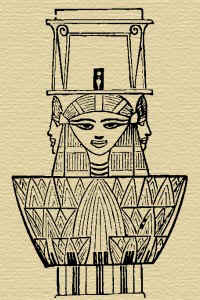





The exalted one, Ptolemy V guarantees the veracy of the
Memphis Gazetteer's press.
One hundred years of honest, almost always truthful, very often unbiased, state run media
excellence
One
![]() Two
Two
![]() Three
Three ![]() Four
Four ![]() Five
Five ![]() Six
Six ![]() Seven
Seven
Back to AncientBattles.com Home Page
05/21/11